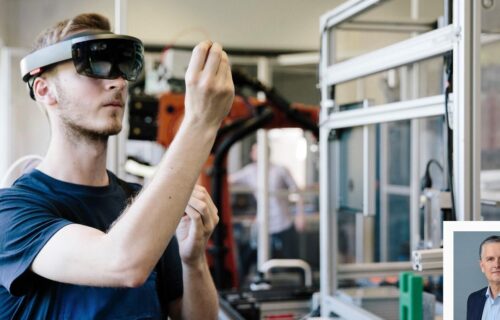The Nordic workplace is on the brink of major change as automation and human–machine collaboration increasingly reshape how tasks are performed. According to the World Economic Forum’s Future of Jobs Report 2025, by 2030 the share of work handled exclusively by humans is expected to fall from 47 percent to 33 percent. The remainder will be divided almost evenly between automation carried out by machines and algorithms, and augmentation in which technology supports human capabilities.
For the Nordic region, this transformation has implications that extend well beyond leased office space. Many of the sectors most affected by automation and augmentation are significant owner-occupiers of real estate, including manufacturing, finance, healthcare, and government institutions. This means the issue is not only about reducing or reconfiguring rented footprints but also about how organisations choose to invest in, repurpose, or divest assets that sit directly on their balance sheets.
The impact is not uniform across industries. In sectors such as advanced manufacturing, electronics, and financial services, a high share of task reduction will be driven by automation. For these industries, fewer people in back offices and robotics-enabled production facilities could leave companies with surplus space. Decisions will then centre on whether to reinvest in key sites to improve productivity, sell underutilised properties, or convert them to alternative uses. In contrast, industries such as healthcare, public administration, and energy technology are more likely to see augmentation dominate. In these cases, real estate demand will remain stable, but facilities will require significant investment to integrate new technology while still supporting human-centred activity. Hospitals, civic offices, and energy control centres will need upgrades that balance advanced digital systems with environments designed for human expertise.
The consequences for Nordic corporate real estate are far-reaching. Companies in manufacturing, healthcare, and the public sector will need comprehensive, data-driven reviews of their estates to decide which properties to retain, modernise, or release. At the same time, augmentation-heavy sectors must prepare for higher capital expenditure as they adapt buildings to accommodate both people and new technologies, all while meeting increasingly strict sustainability standards. For industries leaning toward automation, surplus properties may be sold or converted, sometimes through sale-and-leaseback arrangements that release capital but allow operational continuity. In cities where older assets become obsolete, there may be opportunities to repurpose them for housing, education, or innovation clusters, aligning with municipal development strategies.
Although the World Economic Forum’s report does not provide Nordic-specific data, the implications for the region are clear. From manufacturing plants in Denmark to hospitals in Finland and civic offices in Norway, owner-occupiers face a strategic choice: whether to adapt, release, or reinvest in their properties as the balance between human work, automation, and augmentation continues to shift.
The report signals that automation and augmentation are no longer distant trends but active forces that will influence economic competitiveness and asset strategy across the Nordics in the years to come. Understanding where each sector lies on this spectrum is becoming as critical to long-term value as location or the physical quality of a building.
Source: Christer Farstad, Head of Occupier Services, CBRE Nordics
